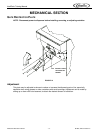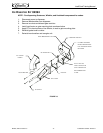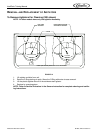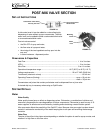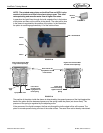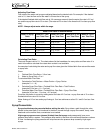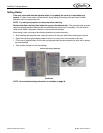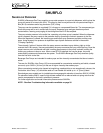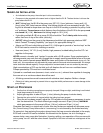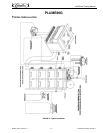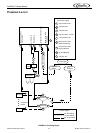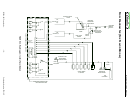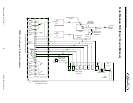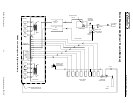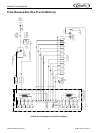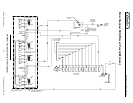
IntelliCarb Training Manual
Publication Number: TP01071 - 16 - © 2004, IMI Cornelius Inc.
SHURFLOW INSTALLATION
• As indicated on the pump, the outlet port is to be mounted up.
• Pumps are to be mounted at the same level or higher than the B-I-B. The best choice is to have the
pump above the B-I-B.
• INLET
tubing from the B-I-B to the pump use; 3/8" I.D. [10mm] minimum, heavy wall (1/8"
[3mm])
clear, NSF listed vacuum tubing. Inlet tubing should not have excessive length. Tub-
ing that is allowed to drape down can trap air in the B-I-B creating a potential for pump "sold-
out" problems.
The maximum vertical distance from the bottom of the B-I-B to the pump must
not exceed 5 ft [1.5 M
]. Maximum inlet tubing length is 10 ft. [3 M ].
• If plumbing multiple B-I-B’s to a pump, B-I-B's should be "Teed" side-by-side horizontally,
rather than one on top of the other
(vertically).
• OUTLET tubing from the pump to the dispenser should be high pressure rated and NSF
listed. Consult "Pumping Capability"
(see page 2) for appropiate tubing I.D.
• Always cut CO2 and outlet tubing at least 2 ft. [.6 M] longer to provide a "service loop" so the
B-I-B rack can be moved for cleaning or service.
• Use new (clean), 1/4" I.D. [6 mm], flexible, high pressure, braided tubing from the CO2 / air
regulator to the pump.
NEVER connect a transfer tank "system" in series with a B-I-B system. Syrup contaminants in
old components may work their way through the air supply causing premature failure of the gas
pump. Gas used to operate pumps
MUST be clean and contain no contaminants (syrup, oil, rust,
water, etc
). Air compressors may be used with proper particle filters and moisture separators. Air storage
tanks should be drained regularly. Pumps subjected to contaminated air are not covered by warranty.
High concentrations of CO2 can be fatal as it will displace the air from non-ventilated areas.
Pumps operated by CO
2 must be in ventilated areas.
If placed in a confined area
(basement, closet, cooler box, etc.), exhaust fans capable of changing
the room air on a continuous basis should be used.
• All tubing connections must be secured with stainless steel, stepless Oetiker ® clamps.
• Cable-tie all tubing securely to prevent kinks or sags that inhibit performance or cause damage to the
pump fittings.
START-UP PROCEDURE
1. Confirm that all tubing connections are properly clamped, fittings are tight, and tubing is not kinked.
Install bag connector to the B-I-B.
2.
Adjust gas regulator to about 20 psi. [1.4 bar] allowing the pump to stroke slowly.
3. Operate the valve until all air trapped within the tubing has been purged.
4.
Once the air has been purged, adjust the CO2 regulator to the pressure necessary to main-
tain the desired brix. The most efficient gas usage occurs at 40 psi.
[2.8 bar]. MAXIMUM
static gas pressure to the pump is 85 psi. [5.8 bar], minimum 20 psi. [1.4 bar].
Flowrates that result in a stroke-rate of more than two strokes per second will decrease pump
life.
(Consult factory) Pump failure due to "overrunning" is not covered by the limited warranty.
To prevent air from entering the system always leave the bag connector attached to the empty
B-I-B until a new B-I-B can be installed. Air entered into the system, via air in the bags or
vacuum leaks, may cause brix fluctuation, foaming, spitting, non-operation of the vacuum sold-
out or pump "run-on" with the valve closed.
Symptoms of this kind can lead to a misdiagnosis of the
pump.



